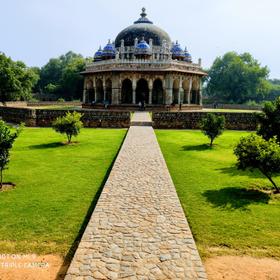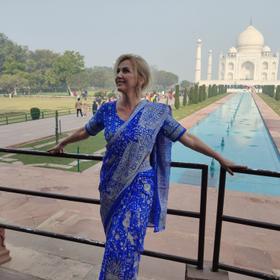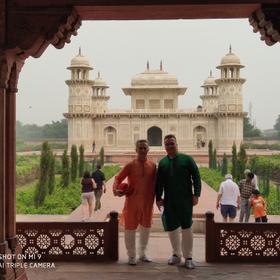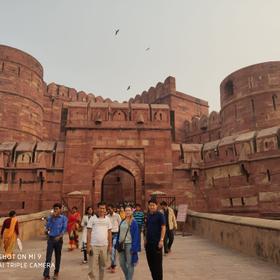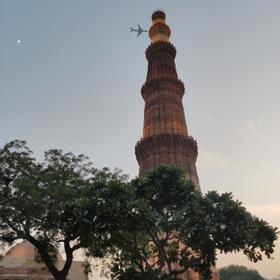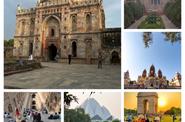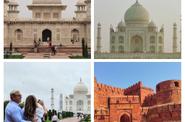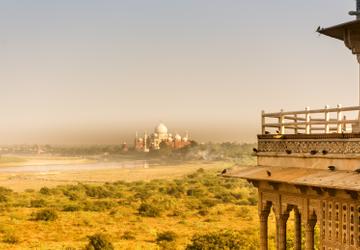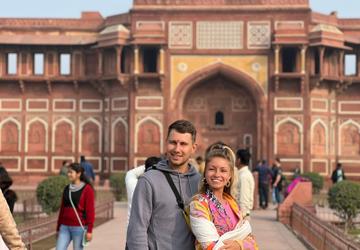- Meeting you at the Delhi airport - traditional welcome with flower garlands
- Delhi sightseeing
Old Delhi
Old Delhi was once called New Delhi and this was in the 17th century. The sultans built for themselves the capitals and regions of these cities before the reign of the Great Mogul Shah Jahan and they were just a common urban entity called Delhi. Shah Jahan decided to build a new capital - Shahjahanabad. From that moment on, Shahjahanabad became New Delhi.
Now, after centuries, the New Delhi of the Great Mughal has turned into Old Delhi. In old Delhi, Shahjahan ordered the construction of the Red Fort, similar to the one he had in Agra, and the Great Mosque - Jami Masjid. Subsequently, around these two important points, a new city grew up, surrounded by a fortress wall.
In Old Delhi, life is in full swing according to the laws of the multimillion-dollar jungle and medieval exoticism. Narrow streets and low houses.
Jama Mosque: Built under the orders of the fifth Mughal Emperor Shah Jahan, Jama Mosque is one of the largest mosques in India.
Chandni Chowk: The Chandni Chowk area was designed by the eldest daughter of Emperor Shah Jahan to attract traders from different countries. Her name was Jahanara.
Red Fort: One of the outstanding architectural structures of Indian culture. The construction of the Red Fort in Delhi was completed in 1648. This huge and at the same time beautiful structure was intended for the residence of the Mughal Emperor Shah Jahan. After the colonization of India, the fortress housed an English garrison until 1947. Particular attention was paid to the beauty of the building. Inside there were many palaces, pavilions, swimming pools, and green spaces, which generally make an impression even today. (We'll see from the street)
Sikh Temple: The temple is called Gurudwara Sis Ganj Sahib which is one of the main Sikh temples in Delhi. It was built in 1783 to commemorate the martyrdom of the ninth Guru of the Sikh religion, whose name was Guru Tag Bahadur.
New Delhi
The most important administrative buildings are concentrated in New Delhi. Most of the local nobility live here. New Delhi was designed by Edwin Lutyens, a leading British architect of the 20th century, New Delhi is famous for its wide, tree-lined boulevards and is home to numerous national institutions and landmarks. New Delhi is built around two central esplanades: Rajpath and Janpath. Rajpath, or the King's Road, starts from Rashtrapati Bhavan and extends to India Gate. The Janpath or People's Road, formerly known as the Queen's Road, starts from Connaught Place and crosses Rajpath at right angles. Delhi is a cosmopolitan city where different cultures are mixed. The different peoples of India play different roles in the city's economy.
Raj Ghat: This is a monument to Mahatma Gandhi and other Indian prime ministers. This is a huge park with beautiful views located on the banks of the Yamuna River.
Akshardham Temple: Akshardham Temple located in Delhi, Akshardham temple complex is the largest Hindu temple in the world. Akshardham Temple has been included in the Guinness Book of Records.
Lotus Temple: The Lotus Temple is the main temple of the Bahai religion in India and neighboring countries, built in 1986. Located in the city of New Delhi.
Birla Temple: Lakshmi Narayan Mandir is a Hindu temple also known as Birla Mandir. The temple was built in honor of the goddess of happiness and abundance Lakshmi and Narayana, who is one of the incarnations of the god Vishnu.
India Gate: India Gate, originally called the All India War Memorial.
President's House: The official residence of the President of India in New Delhi. Construction of the complex began in the 1910s, designed by the famous British architect Edwin Lutyens, and continued intermittently until 1929, although minor improvements continued until 1930.
- Lunch: Enjoy a delicious traditional Indian lunch at the best restaurant in the city. During lunch you will learn about local traditions and customs (optional).
Agrasen Ki Baoli: Agrasen Ki Baoli are step wells that are more like swimming pools. They collect top groundwater and rainwater, which is then used all year round for drinking, bathing, washing, irrigation and other household needs.
Lodhi Garden: Lodhi Garden is a city park in Delhi. The park contains the tomb of Muhammad Shah, Sikander Lodi, Shish Gumbad and Bara Gumbad, examples of architecture from the 15th century when Delhi was dominated by the Pashtun Sayyid and Lodi dynasties.
- Moving to Agra city (the journey takes 3 hours)
- Hotel accommodation. Night in Agra

